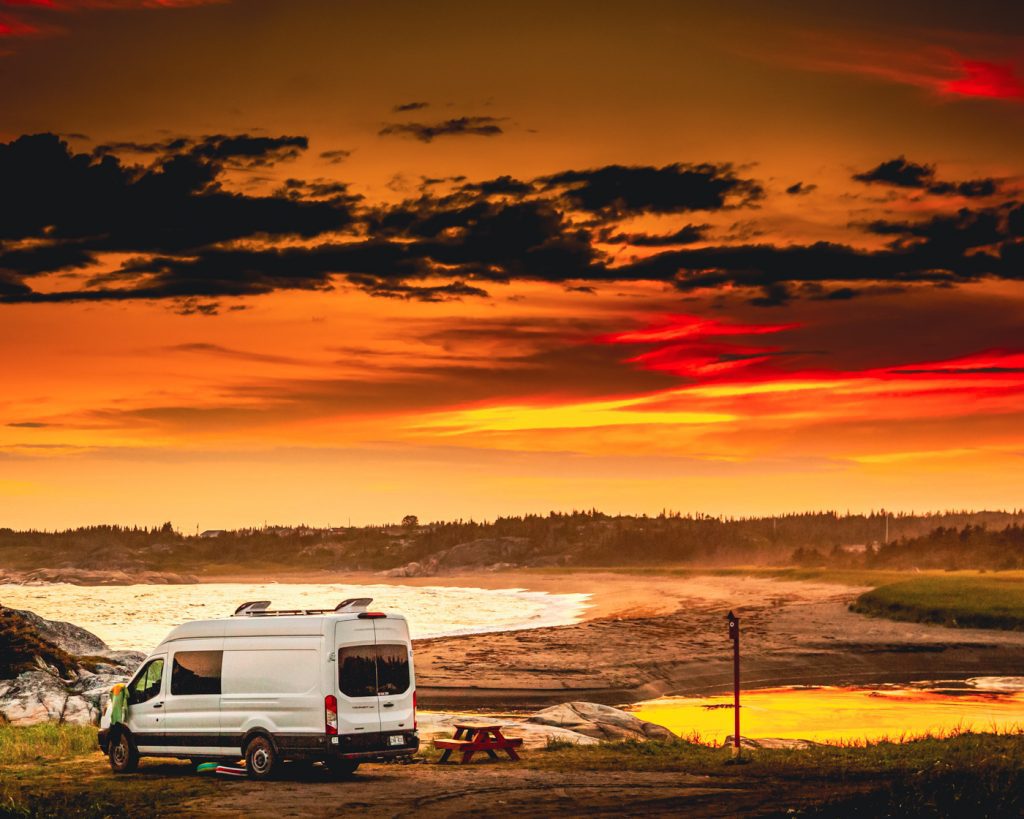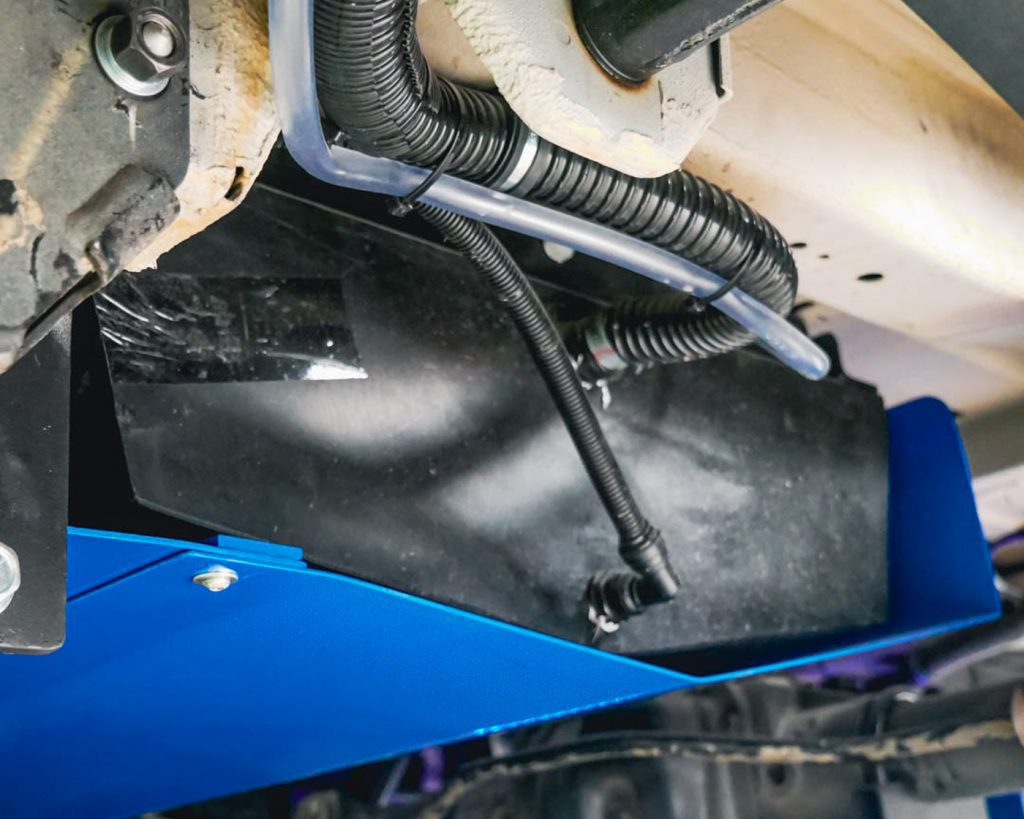Storing your caravan for winter can be daunting, but keeping it in good condition and ensuring everything is working correctly when you take it out again is essential. To help make sure your caravan is all set for storage, we’ve compiled a list of essential maintenance and repair tasks that will help you prepare for winter.
1. Clean the caravan inside and out, including windows, roof and walls. This will help keep your caravan in top condition and prevent mould or mildew build-up while in storage.
- Vacuum carpets and upholstery
- Clean all windows, walls, roof and exterior of the caravan
- Wash bedding, curtains and towels
- Remove any items that are not needed for storage, such as food, items left in cupboards or drawers etc
- Empty waste tanks if necessary
2. Check that all appliances work correctly and clean them if necessary. This is especially important for gas appliances, as they must be maintained regularly to operate safely.
- Check all gas appliances for any signs of leakage or damage.
- Test flues and air vents to make sure they are clear and free from obstruction.
- Inspect hoses, pipes, seals and connectors for any cracks or leaks in the system.
- Ensure all gas cookers, fridges, and heaters are off before you begin maintenance checks
- Check for signs of rust on metal parts such as the stove top, oven door etc
- Clean out the fridge with an ammonia-based cleaner if necessary
- Ensure that your caravan’s battery is charged properly before storage
- Run a test cycle to ensure that all components of your caravan’s heating system work correctly
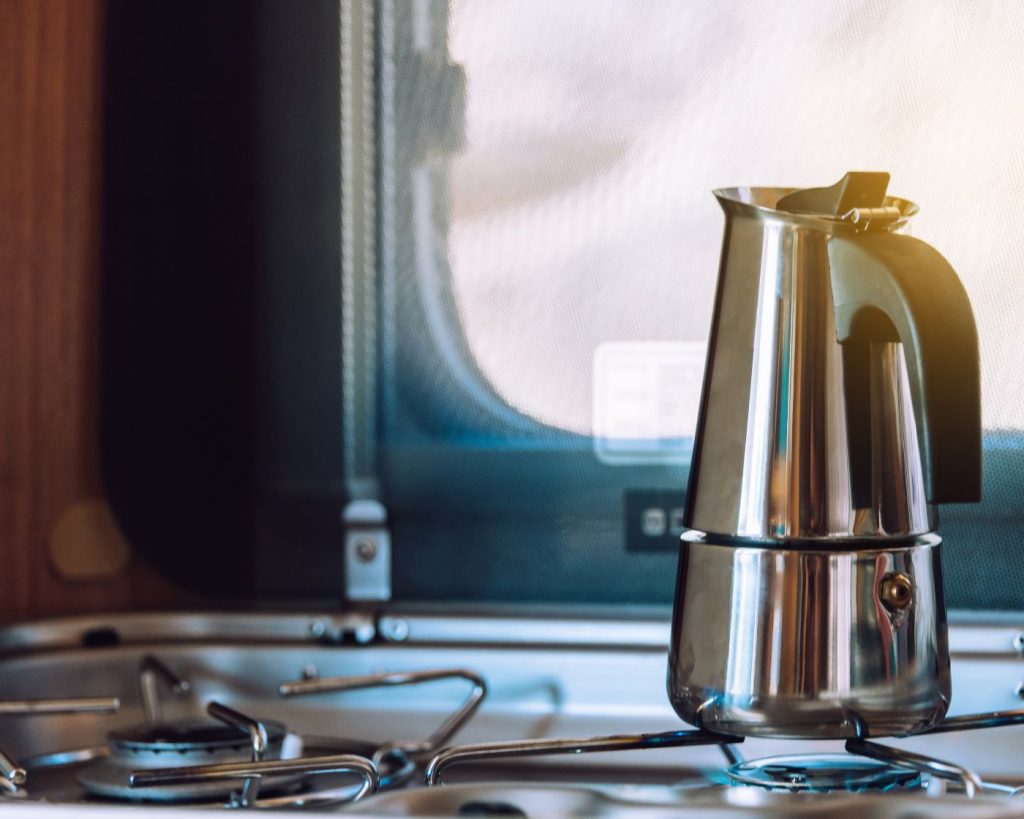
3. Inspect all external parts of the caravan, such as windows and doors, for any signs of damage and repair or replace where necessary. This will help prevent water from entering your caravan and causing further damage.
- Inspect all external parts of the caravan, such as windows and doors, for any signs of damage or wear and tear
- Check seals around windows and doors to ensure there is no water ingress
- Look at roof vents to make sure they are free from obstruction
- Ensure that fly screens are secure in their frames
- Check hinges on window latches for smooth operation
- Examine door locks for proper alignment and lubricate them if necessary
- Test the awning fabric for any tears, fraying or fading
- Check your caravan’s tyres – replace if necessary
- Make sure all lights are working properly
- Inspect the exterior wall panels to check for dents or scratches
4. Repair any holes in the roof, as this can lead to water and other elements of nature getting into your caravan when it’s in storage.
- Start by inspecting the roof for any signs of damage or wear and tear, such as tears or cracks in the material. Pay particular attention to seams, caulk and other weatherproofing materials.
- Use a ladder to get a closer look at the roof from above if necessary – you may be able to spot any damage that is not visible from ground level.
- Check all seals and weatherproofing materials around vents and other openings on the roof of your caravan, ensuring they are still providing an adequate seal against water ingress.
- Look for signs of rust on any metal fittings, such as air conditioning units, antenna mounts or satellite dishes etc
- Inspect the roof’s surface for any discolouration or staining, which could indicate water leaks that are not visible to the naked eye.
- Check all fastenings and screws to ensure they are tight and secure – this will help prevent them from becoming loose over time due to wind exposure while in storage.
- Ensure that all vents are clear of debris and that no obstructions are blocking any openings which could lead to heat build-up inside your caravan during storage
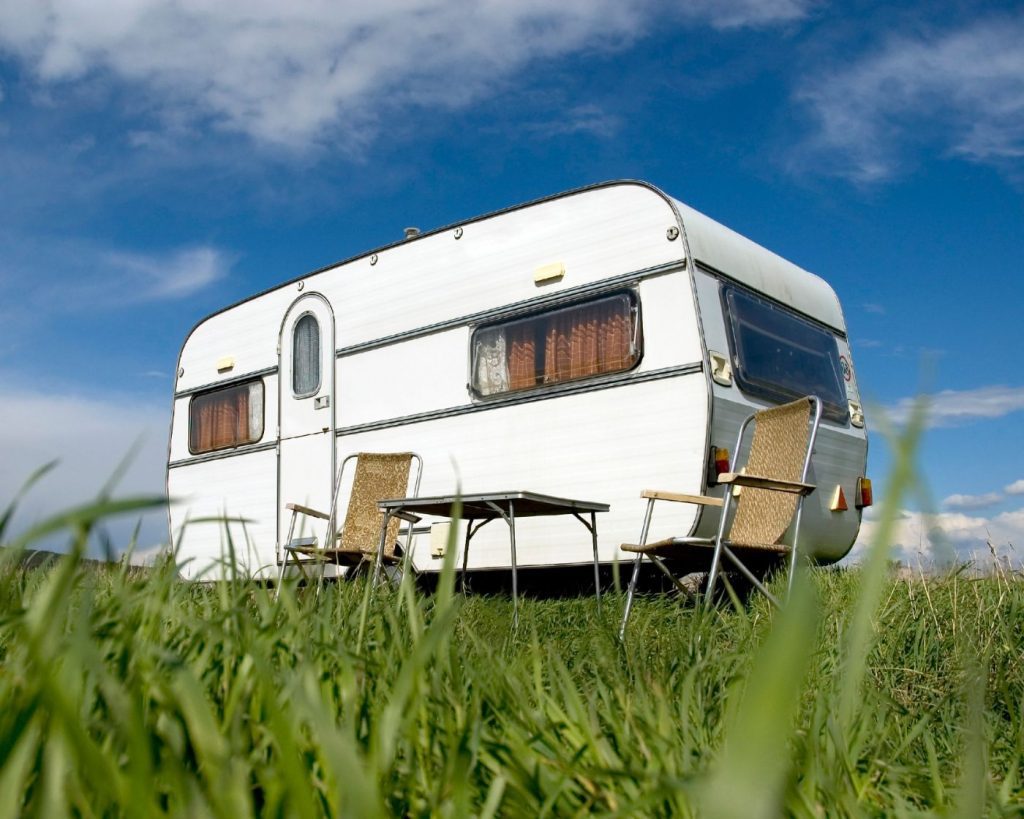
5. Check all the tyres for signs of wear and tear, replacing any that need it before storing your caravan. This will help ensure your caravan has a good road grip when it’s taken out of storage.
- Park your caravan on a level surface and ensure the handbrake is fully engaged.
- Inspect each tyre for signs of wear and tear, such as cracks, bulges or flat spots in the sidewall.
- Use a tyre gauge to check that all tyres are inflated to the correct pressure as the manufacturer recommends – this should be printed on the side of each tyre.
- Check for uneven wear patterns on the treads of each tyre, as this could indicate poor wheel alignment or a problem with your caravan’s suspension system.
- Look at the inside walls of each tyre to check for any objects that may have been embedded in the rubber, such as nails or screws etc – these should be removed if found.
- Inspect the wheel rims for any signs of rust or corrosion, ensuring they are clean and free from dirt before putting them back onto your caravan’s wheels.
- Replace any tyres showing signs of damage or wear and tear with new ones before storing your caravan away for winter – always use tyres appropriate for your caravan’s weight rating and dimensions.
6. Lubricate all the locks, catches and hinges on the caravan to help keep them working correctly while in storage.
- Before lubricating any locks, catches and hinges on a caravan, it is essential to ensure they are free from dirt and debris. This can be done by wiping away dust or grime with a cloth or using compressed air to blow away loose dirt.
- Once the area has been cleaned, a suitable lubricant should be chosen based on the type of material being lubricated. Generally, a light oil such as WD-40 or silicone spray will work well for most applications.
- For door and window locks, start by spraying the lubricant into the keyhole and then onto the surface of the lock itself. Work it in with a small brush or cotton bud for the best results. Do this for each lock in turn until all are fully lubricated.
- Apply the lubricant to any moving parts, such as pins or pivots, on catches and hinges. Make sure to get into all the crevices that may not be visible with a cursory glance. Once again, use a brush or cotton bud to work it into these areas for the best results.
- Finally, if desired, you can spray some of the lubricant onto a rag and then wipe down other components of your caravan, such as roof vents, windows and door frames etc – this will help prevent them from becoming corroded while in storage over winter.
7. Inspect the cables and connections for signs of damage or wear and tear and repair where necessary. This will help ensure that all of the components of your caravan are in good working order when you take it out again.
- Check for exposed wires or cracks in the insulation
- Inspect for corrosion along the length of the cable or connection
- Look to see if there are frayed ends on either side of the connection
- Test each cable and connection with a multi-meter to check for continuity resistance readings
- Visually inspect connectors such as plugs and sockets for signs of damage, wear or tear
- If a cable needs to be replaced, ensure that it is suitable for use with caravans by checking its specifications against those recommended by your caravan model’s manufacturer.
8. Check that all water systems are sealed properly and replace any seals where necessary. This will help prevent any water damage while the caravan is stored away.
- Inspect all water lines, hoses and tanks for signs of wear or damage
- Check O-rings and seals at each connection point to ensure they are in good condition
- Ensure that the water heater is disconnected from the gas supply and its drain plug removed
- Make sure that all taps, valves, pumps and fixtures are clean and free from any debris or blockages
- Flush out the system with fresh water to remove any built-up sediment
- Turn off the main valve on the caravan’s drinking water tank before travelling
- Inspect all accessible areas around pipes for signs of leaks or moisture build-up
- Test pressure relief valves to make sure they are functioning properly
9. Ensure the battery is fully charged before storing the caravan, which will help extend its life.
- Over time, the battery’s internal chemistry will degrade due to self-discharge and sulfation. This can lead to reduced performance and a shorter lifespan.
- Before storage, charge the battery until the voltage reads 13.2V or higher (check your caravan’s manual for the exact figure). This will help ensure the battery is in good condition when you take your caravan out again.
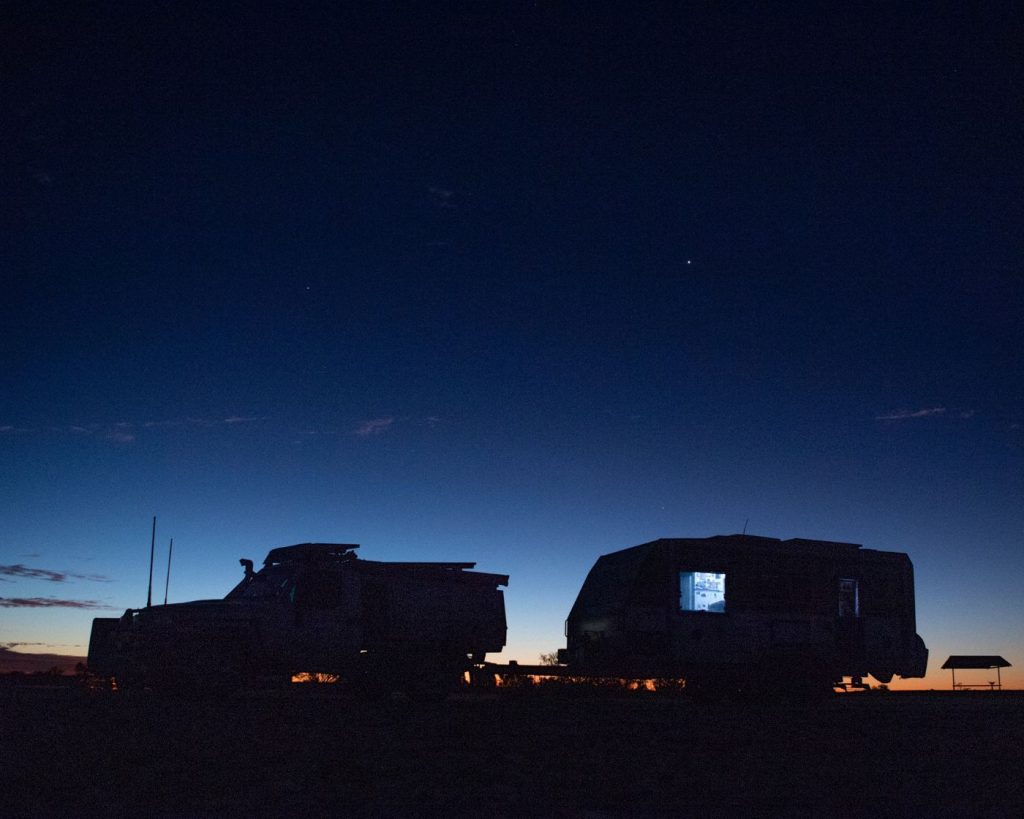
10. Finally, ensure the caravan is properly secured and stored in a dry location to prevent further damage or wear and tear while it’s away from you.
- Ensure that the storage facility is properly secured and offers monitored access.
- Look for a storage location with enclosed units or metal buildings to protect your caravan from weather elements.
- Consider whether you would like indoor or outdoor storage options, as outdoor spaces can be more vulnerable to theft and vandalism.
- Visit the facility in person to confirm it meets all of your safety requirements and ask if any additional security measures, such as security cameras or electronic gates, are available.
- Ensure the site has good drainage so your caravan won’t get damaged by water seepage during bad weather conditions.
- Research how often staff will patrol the area, check on stored vehicles, and review surveillance footage if applicable.
- Ask about insurance policies for stored items – some facilities may require proof of coverage before accepting your caravan.
- Get quotes from different locations to compare prices and services offered before deciding.
Doing these essential maintenance tasks will help ensure your caravan is ready for storage and in good condition when it’s taken out again. If you have any queries or need help with any of these tasks, contact the professionals who can provide guidance and advice on proper caravan maintenance and repair.


